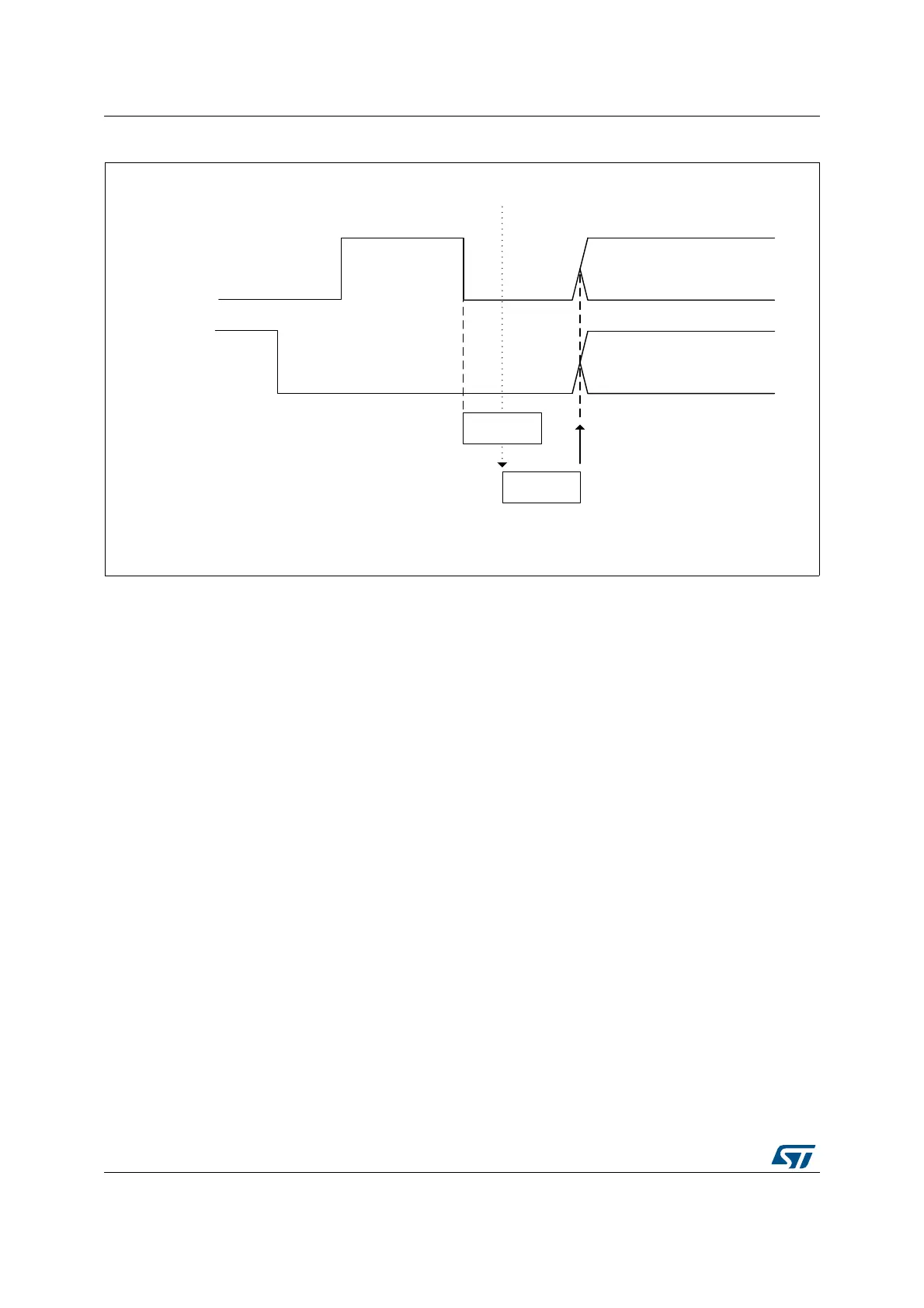High-resolution timer (HRTIM) RM0440
922/2126 RM0440 Rev 4
Figure 239. Delayed burst mode entry during deadtime
Burst mode exit
The burst mode exit is either forced by software (in continuous mode) or once the idle period
is elapsed (in single-shot mode). In both cases, the counter is re-started immediately (if it
was hold in a reset state with MTBM or TxBM bit = 1), but the effective output state transition
from the idle to active mode only happens after the programmed set/reset event.
A burst period interrupt is generated in single-shot and continuous modes when BMPERIE
enable bit is set in the HRTIM_IER register. This interrupt can be used to synchronize the
burst mode exit with a burst period in continuous burst mode.
Figure 240 shows how a normal operation is resumed when the deadtime is enabled.
Although the burst mode exit is immediate, this is only effective on the first set event on any
of the complementary outputs.
Two different cases are presented:
1. The burst mode ends while the signal is inactive on the crossbar output waveform. The
active state is resumed on Tx1 and Tx2 on the set event for the Tx1 output, and the Tx2
output does not take the complementary level on burst exit.
2. The burst mode ends while the crossbar output waveform is active: the activity is
resumed on the set event of Tx2 output, and Tx1 does not take the active level
immediately on burst exit.
MS32286V3
DT
IDLES
IDLES
DT
Burst mode entry
Regular deadtime
(aborted when burst is
triggered)
Delayed Burst mode entry deadtime
HRTIM_CHx1
HRTIM_CHx2

